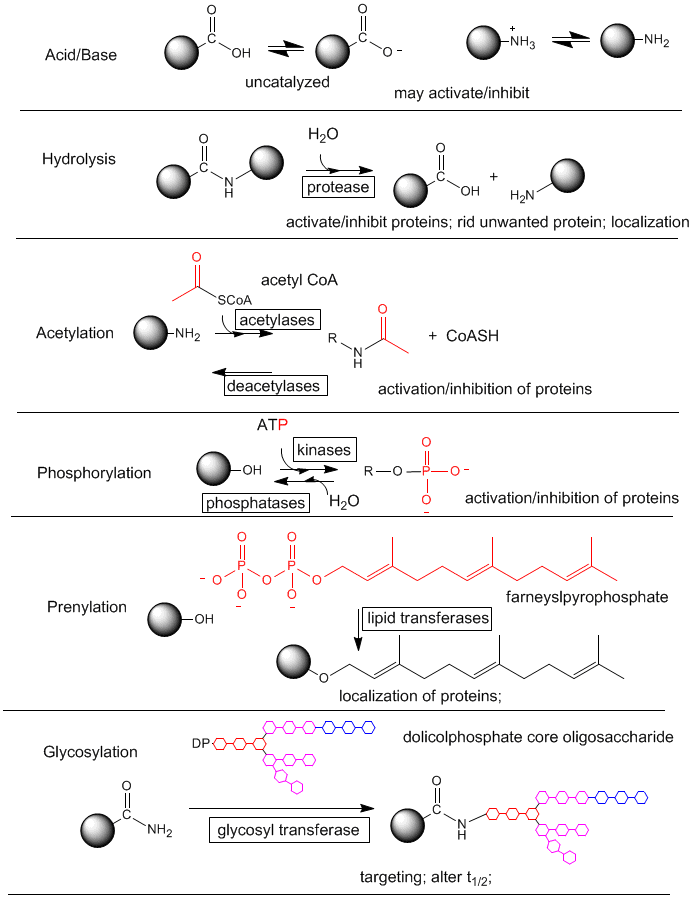Biochemistry Online: An Approach Based on Chemical Logic

CHAPTER 2 - PROTEIN STRUCTURE
A: AMINO ACIDS
BIOCHEMISTRY - DR. JAKUBOWSKI
Last Update: 02/27/16
|
Learning Goals/Objectives for Chapter 2A: After class and this reading, students will be able to
|
A9. In vivo Post Translational Modification of Amino Acids
Amino acids in naturally occurring proteins are also subjected to chemical modification within cells. These modifications alter the properties of the amino acid that is modified, which can alter the structure and function of the protein. Most chemical modifications made to proteins within cells occur after the protein is synthesized in a process called translation. The resulting chemical changes are termed post-translational modifications.
Figure: Post-translational modification of proteins

Here is a list of post-translational modification from the Swiss Institute of Bioinformatics:
-
PDOC00001 1 N-glycosylation site
-
PDOC00004 1 cAMP- and cGMP-dependent protein kinase phosphorylation site
-
PDOC00005 1 Protein kinase C phosphorylation site
-
PDOC00006 1 Casein kinase II phosphorylation site
-
PDOC00007 1 Tyrosine kinase phosphorylation site
-
PDOC00008 1 N-myristoylation site
-
PDOC00009 1 Amidation site
-
PDOC00010 1 Aspartic acid and asparagine hydroxylation site
-
PDOC00012 1 Phosphopantetheine attachment site
-
PDOC00013 1 Prokaryotic membrane lipoprotein lipid attachment site
-
PDOC00342 1 Prokaryotic N-terminal methylation site
-
PDOC00266 1 Prenyl group binding site (CAAX box)
-
PDOC00687 2 Intein N- and C-terminal splicing motif profiles
Navigation
Return to Chapter 2A: Amino Acid Sections
Return to Biochemistry Online Table of Contents
Archived version of full Chapter 2A: Amino Acids

Biochemistry Online by Henry Jakubowski is licensed under a Creative Commons Attribution-NonCommercial 4.0 International License.